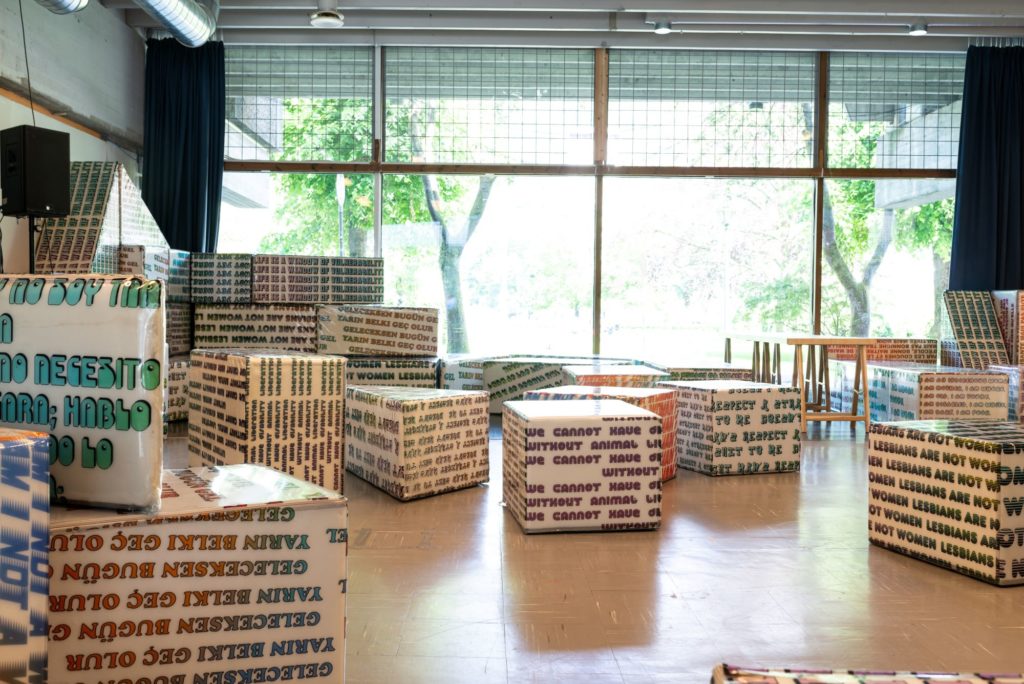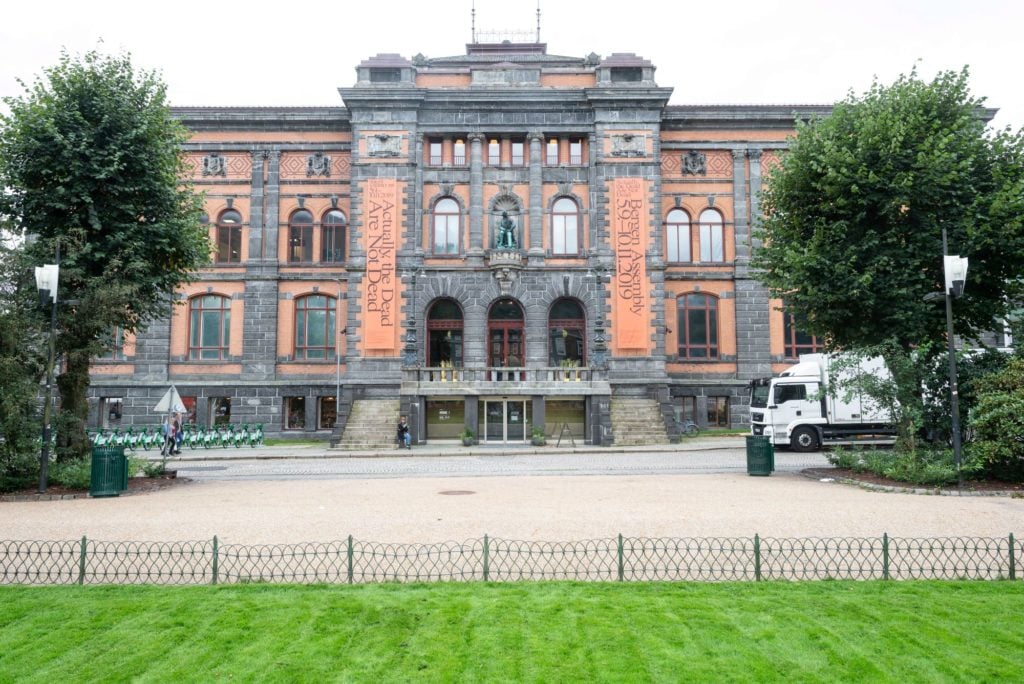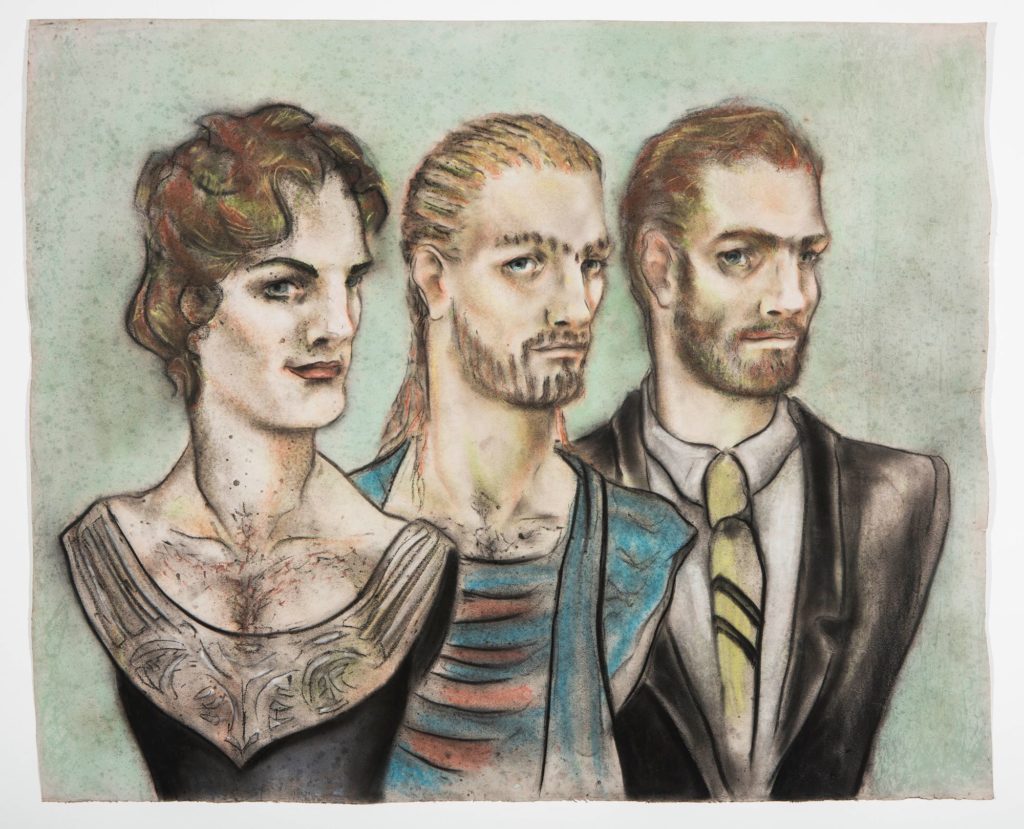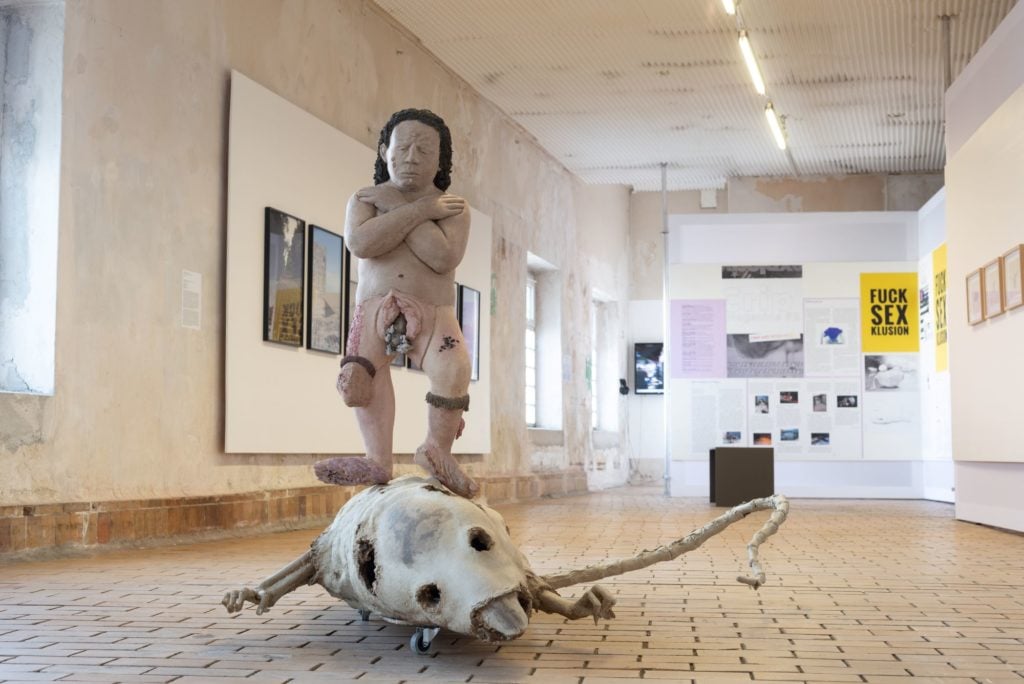Art & Exhibitions
The Curators of the Bergen Assembly Open an Exhibition With a Never-Say-Die Attitude
The triennial returns to the Norwegian city with a mission to put marginalized voices center stage.

The triennial returns to the Norwegian city with a mission to put marginalized voices center stage.

Norway has hosted a staggering number of biennials and other big art events this year. From the inaugural Oslo Biennial, and an architecture triennial in the capital, to Momentum, LIAF, and Screen City in the more remote locations of Moss, Lofoten, and Stavanger respectively, there is no shortage of international exhibitions in the sparsely populated country. The Nordic country’s most critically lauded, and best established event, is the Bergen Assembly, a triennial exhibition that returned to the small Norwegian city last week.
Appointing curatorial teams to helm major biennials and triennials is a growing trend. The Bergen Assembly was an early adopter of a collective approach. But the jury is out as to whether a multi-headed approach really makes for more inclusive exhibitions that are better suited to these politically fraught times.
The Bergen Assembly’s curatorial team is once again the size of a soccer team. The main “conveners” of the 2019 edition are the German curators Iris Dressler and Hans D. Christ. The co-directors of the Württembergischer Kunstverein in Stuttgart invited 11 collaborators to collectively organize the exhibition “Actually, the Dead Are Not Dead.”
The international team includes Simon Sheikh, a curator who teaches at London’s Goldsmiths College, the human rights lawyer Murat Deha Boduroğlu, the Spanish philosopher Paul B. Preciado, and artists Emma Wolukau-Wanambwa, Hiwa K, and Banu Cennetoğlu, among others.
As its title suggests, the exhibition aims to give voice to the voiceless, make space for dissident opinions, and celebrates the rebellious spirits that find little representation in the mainstream.

One of the main venues of Bergen Assembly, KODE 1. Photo Thor Brødreskift.
Several of the Bergen exhibition’s main concerns continue where the socially-engaged documenta 14 in Kassel and Athens left off. This is perhaps inevitable given that some of the artists on the curatorial team participated in the 2017 edition of the prestigious, quinquennial exhibition. Preciado was documenta 14’s curator of public programs.
Visitors to Kassel two years ago may remember the moving, life-affirming paintings, drawings, and photographs by the late Lorenza Böttner, which are on show in Bergen as well. A transsexual artist born to German parents in Chile, she was raised in Germany after an accident that left her with no arms. She painted with her feet and mouth, and was a formidable dancer.

Lorenza Böttner, untitled (no date). Courtesy private collection.
Having brought the series of gatherings and performances called “The Parliament of Bodies” from documenta to Bergen, Preciado called to life the Society of Friends of Lorenza Böttner in a gathering programmed around differently abled bodies. (Böttner’s mother is one of the Society’s founding members.) Preciado declared to an elated audience that the Society will work to counter the authority of the hand (as opposed to other body parts) in the history of art.
By coincidence, there was a political gathering of different local groups working to improve the rights and conditions of the disabled held in a nearby park. One group had a banner that said: “I want to be your colleague, not your inspiration.” That the two events took place within a few hundred meters of each other and did not connect speaks to the insularity of the art world.
The happening, Gypsy Girl (2019), was organized by triennial conveners Pedro Romero and Maria Garcia. In the performance an erotic, semi-nude portrait of a Roma woman by the Hungarian-Roma artist Charles Roka was removed from a local bar, where it has hung for years, and taken in a celebratory procession to the Kode 1 art museum. There the curators hung it alongside politically charged works.
Roka, who lived in Norway, was a serious painter but could only find commercial success with his pinup-style paintings of olive-skinned temptresses. The curators draw a parallel between his work and an action in 1964 when pin-up photographs were hijacked by anonymous Situationist artists to challenge General Franco’s dictatorship in Spain.
The happening was criticized in a talk by local Roma-rights activist Tore-Jarl Bielenberg about Norway’s treatment of its Sinti and Roma in World War II. He argued that it was unfair to Roka to place his painting in the museum among works by artists, such as the Austrian-Roma Ceija Stojka. An Auschwitz survivor and activist for Roma rights, she painted haunting images of women prisoners’ starved bodies in the Nazi concentration camps.

Ines Doujak
Sing Along! (2019). Co-produced by Bergen Assembly 2019.
Of the many artists showing engrossing, thought-provoking works, those by the Austrian feminist artist Ines Doujak stand out. Her sculpture, drawings, and a collaborative info-chart with John Barker were shown across three venues. Visually enthralling, Doujak’s works are populated by mythical beings, part-human, part-animal, and part-plant, that embody histories of inequality, cruelty, and disregard of human life.
Ample weight was given to time-based formats in the triennial’s opening weekend’s program, including interactive role-playing board games, a medium that is gaining visibility in the art world. One of the games, Troll Swamp (2019) by artists Anne de Boer and Eloïse Bonneviot, focuses on acting out the players’ online behavior, tackling the dangerous disconnects in our daily interactions, on- and offline.
The exhibition is not without its artistic highlights and discoveries, but at the same time it is riddled with contradictions and gestures that fell flat. So what went wrong?
When the proposal to host an art event in the Norwegian city was first put forward by its municipality a decade ago, art world intellectuals responded with a heady gathering in the Bergen Kunsthall that questioned how to meaningfully influence the booming trend for what was, essentially, art events backed by tourism bureaus around the world. The resulting Biennial Reader (2010) is still a definitive publication on the matter; it also provided the theoretical blueprint for launching the Bergen Assembly triennial.
But ten years on, the question that lingers after the Assembly’s opening weekend is not whether we’ve reached saturation point, or Peak Biennial, (we have, but that’s ok—there’s enough art to show and enough audiences for it) but rather, have we arrived at Peak Biennial Navel-Gazing?
“Actually, The Dead Are Not Dead,” Bergen Assemby 2019, September 5 through November 10, various venues, Bergen, Norway.